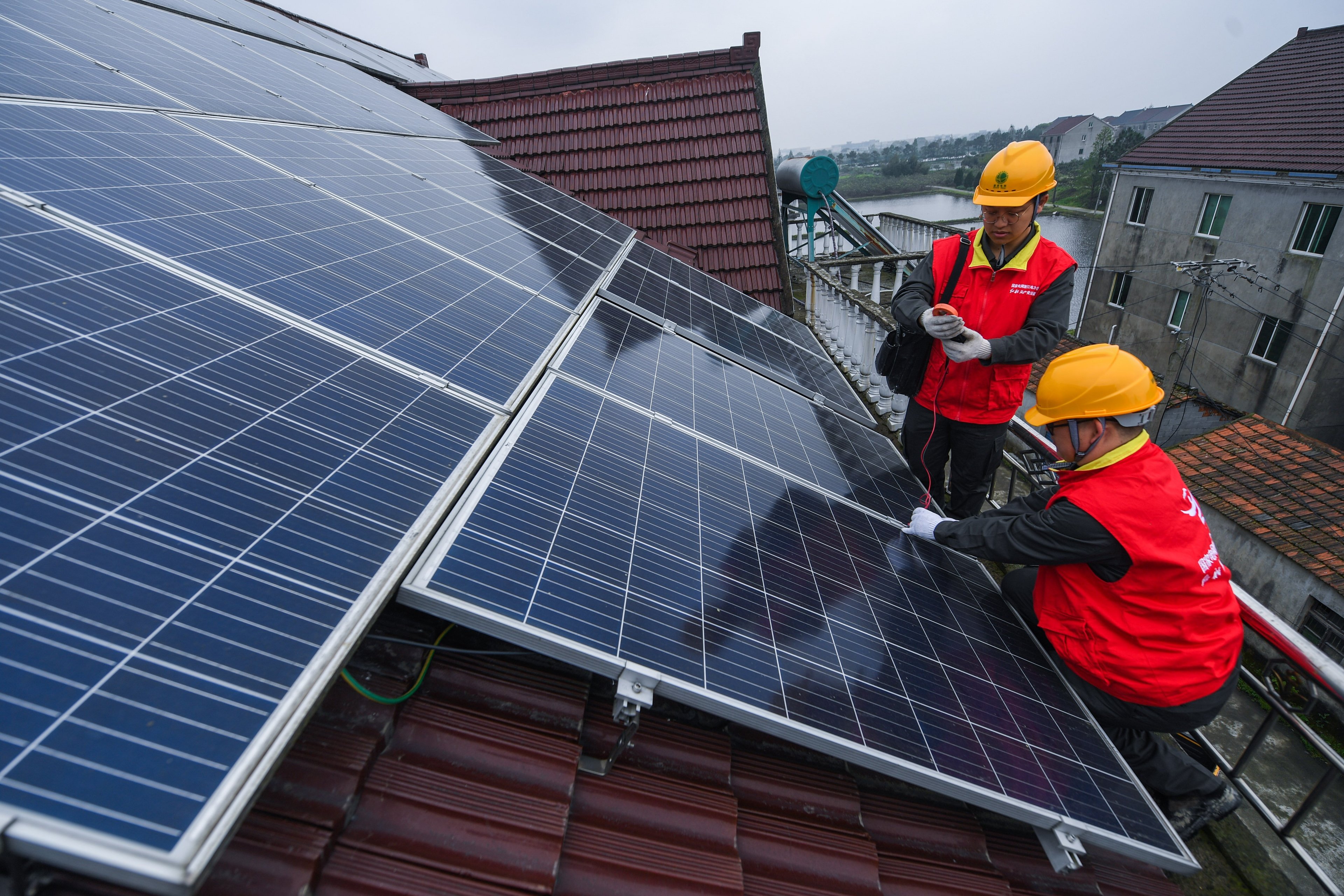Liu Yuxi, President of LONGi Green Energy China: The vicious price war will affect the development of the photovoltaic industry and undermine the innovation of Chinese enterprises
After 2004, after nearly 20 years,The APEC Conference was again hosted by Chinese mainland.
October 20-22, 2023,The 24th APEC Conference was held in Xiamen. The reporter of "Daily Economic News" learned from the scene that this conference was made up ofOrganized by the East Asia and Western Pacific Electric Power Industry Association and the China Electricity Council, and co-sponsored by 18 major Chinese power enterprises and units.
With the theme of "Green and Low-carbon, Electric Brightening the Future", representatives of many enterprises at home and abroad discussed the trend of green and low-carbon development and explored the energy development path in the Asia-Pacific region around the key issues in the field of energy and power of Asia-Pacific and global concern.
What role will China play in the energy transition in the Asia-Pacific region? What pressures does Asia Pacific face to reduce carbon emissions? How can the PV industry contribute to the energy transition in Asia Pacific?
With this series of questions, the "Daily Economic News" (hereinafter referred to as NBD) reporter at the conference siteLiu Yuxi, President of LONGi Green Energy (SH601012, stock price of 24.89 yuan, total market value of 188.6 billion yuan, hereinafter referred to as LONGi Green Energy) China Regional Department, and Zhao Bin, President of LONGi Green Energy Asia-Pacific Department, were interviewed.

Workers install photovoltaic equipment on rooftops Image source: Xinhua News Agency
Traditional energy companies have also begun to increase investment in renewable energy
NBD:At present, the Asia-Pacific region accounts for more than half of the world's carbon emissions, what pressure do you think there is in the Asia-Pacific region to reduce carbon emissions?
Zhao Bin:The situation in each country in the Asia-Pacific region is different and depends mainly on the policies of each country. Some countries already have a big framework and set "dual carbon" targets similar to China's "3060".
But overall, the Chinese government is more enforceable. Some countries, although they have plans, look back over the years and find that they have not necessarily met their goals or achieved them relatively well.
For example, Malaysia isA member of the Organization of the Petroleum Exporting Countries (OPEC), it has very rich oil reserves. Like No. 95 gasoline, the current domestic price is about 9 yuan / liter, while in Malaysia, the equivalent of RMB is only about 3 yuan / liter. For example, Indonesia's coal resources account for about 10% of the world's reserves, which is a high proportion. In these regions, the current dependence on fossil energy is still relatively heavy.
These countries are now also aware of the need to promote energy conservation and carbon reduction, after all, fossil energy is not sustainable. In addition, whether from the perspective of environmental protection or from the long-term planning formulated by the United Nations Organization, they must strive to increase renewable energy and reduce fossil energy consumption. It's just that each country will develop a path to achieve it sooner or later according to its own endowments.
NBD:How do you feel about the energy transition or the promotion of PV applications in the Asia-Pacific region?
Zhao Bin:As we engage with our customers, we find that some of them are traditional energy companies but are now investing more in renewable energy.
Some customers are cross-border players who have not been engaged in related fields before, but they believe that new energy is a very good track, and have begun to participate in related projects and increase investment.
However, regardless of the type of participants, in the development of renewable energy projects, they must rely on the local state and power authorities to provide a certain degree of support to enterprises. For example, land resources and policies, after all, must involve the integration of consumption and grid. Therefore, the energy transition is a systematic work, not a single point that can do the energy transition well.
I think the better thing at present is that each country in the Asia-Pacific region has a different level of development, but everyone's understanding of the conversion of traditional energy to renewable energy, reducing fossil energy consumption, and increasing the proportion of renewable energy is unified, and in this context, we must vigorously help different customers to implement carbon reduction goals.
Price wars will affect the development of the photovoltaic industry and undermine the innovation power of Chinese enterprises
NBD:Recently, the lowest price of PV module bidding fell below 1 yuan / watt, which has attracted much market attention, what do you think about this?

Liu Yuxi Image source: interviewee
Liu Yuxi:This year's price drop exceeded our initial expectations, and we didn't expect it to fall so strongly.
Last year, we made a pioneering move in the industry, that is, we signed long-term agreements with many central enterprises and state-owned enterprises. In fact, the price of photovoltaic modules was still in a high stage at that time, but in order to ensure that the projects of central enterprises and state-owned enterprises could be opened and put into production on time, and we also predicted that the price would fall to a certain extent in the future, we signed a long-term agreement at a lower price.
It turned out that this action was right at that time, but we and many customers of central enterprises did not expect that the price would fall so quickly, especially after June this year.
We believe that the previous decline in PV module prices was more due to the industry's normal overcapacity and imbalance between supply and demand, but now it is not limited to the factor of oversupply and demand.
When participating in this year's SNEC (an industry exhibition jointly sponsored by various solar energy industry associations, one of the largest photovoltaic exhibitions in the world), many people in the industry said that from now on, the reshuffle of the photovoltaic industry has begun. This year's SNEC exhibition is unprecedented, but we think that in two or three years, this grand event may not be there, and even 60%~70% of enterprises may be eliminated.
The average price trend of mainstream PV modules since 2020

After entering 2023, the price of photovoltaic modules has seen a significant decline
Today, falling prices have created a panic phenomenon. The product price of photovoltaic modules itself is already very low, if it falls below one yuan, it means that the cost price has completely fallen.
It is conceivable that after the module price falls below the cost, many companies will definitely begin to consider how to reduce the cost to meet their basic income, and even ensure that they lose as little money as possible.
At present, we judge that the module price situation shows no signs of stopping for the time being, but both from the supply side and the buyer's market such as customers, we hope that the situation will not deteriorate further.
To give a simple example, in the past, in terms of battery conversion efficiency, the domestic market was full of flowers and you caught up, but now companies find that it is more important to maintain their own cash flow in the dilemma of investing money in research and development and facing low-cost competition. Therefore, they will be more willing to use funds to ensure survival, and are not willing to take money for research and development, which is not conducive to the entire Chinese photovoltaic industry.
The core advantage of China's photovoltaic is in the innovation gene, if the company does not innovate now, the consequences are worrying. Therefore, we believe that the vicious price war of low-price competition is very unhealthy, which not only brings internal injuries to enterprises, but also affects China's entire photovoltaic industry and hurts China's innovation.
NBD:You mentioned that there has long been overcapacity in the photovoltaic industry, how does LONGi Green Energy respond to this?
Liu Yuxi:In fact, in 2021, the company predicts that there will be overcapacity in the industry. The company's leadership believes that artificially produced products, as long as they are not limited by resources, will inevitably appear surplus in the long run, which is the law of market development that we have always been determined.
Based on this prediction, LONGi began to reserve enough cash. The outside world can also see that the company has frequently moved in the capital market in recent years, and now the cash flow level and overall operating health have exceeded the industry level. So from the operational level, we have made sufficient preparations for the reshuffle of the industry.







